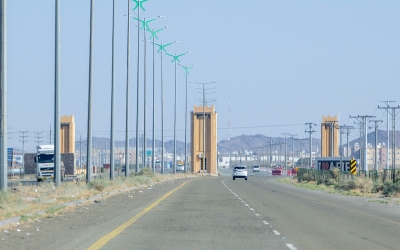
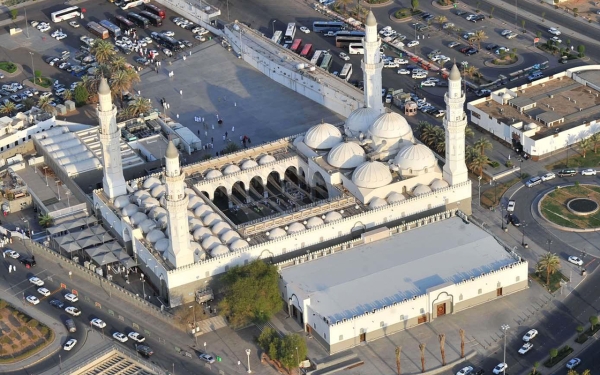
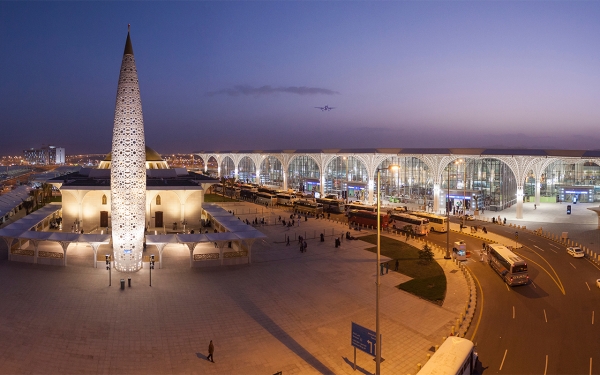
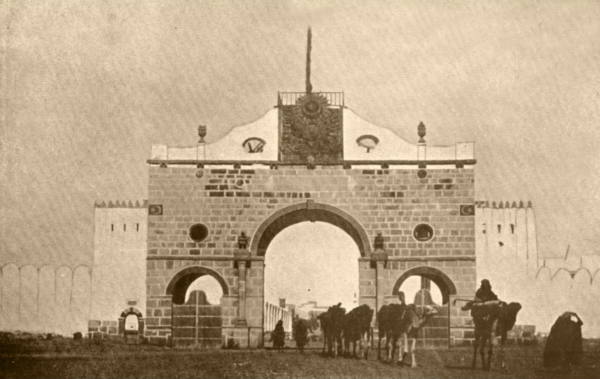
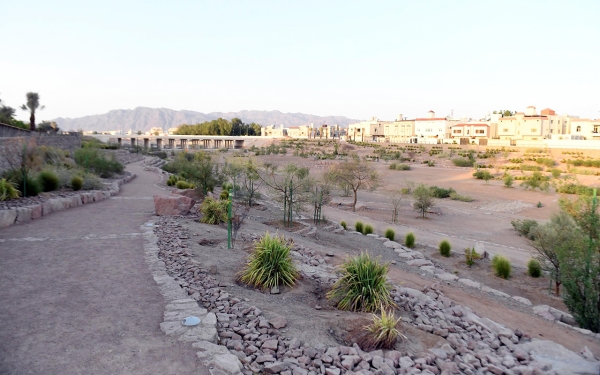
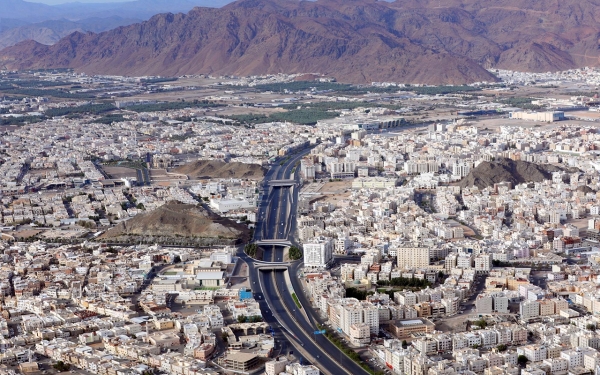
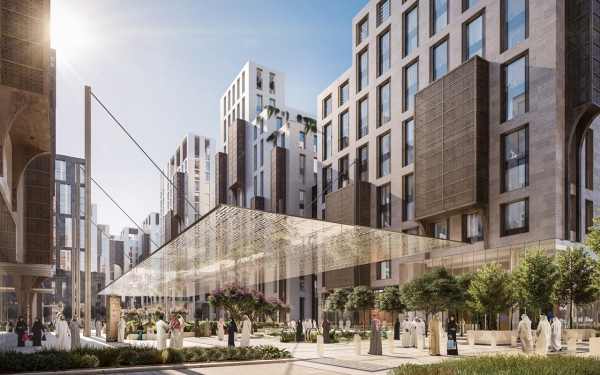
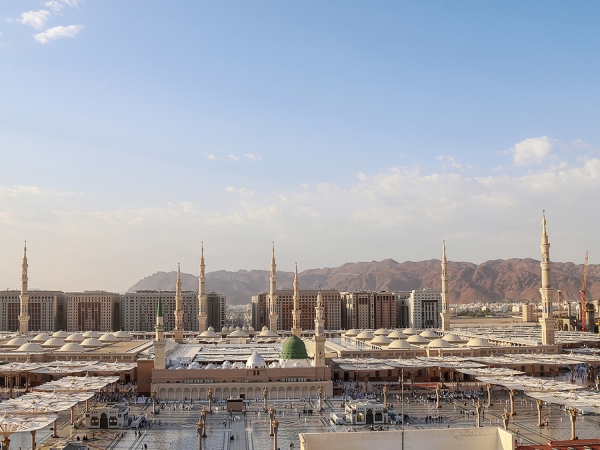
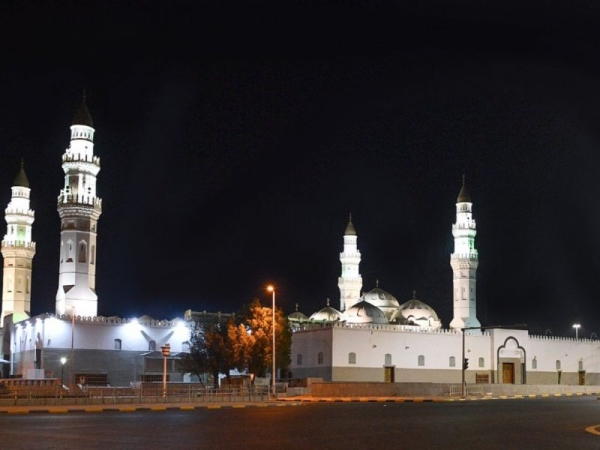
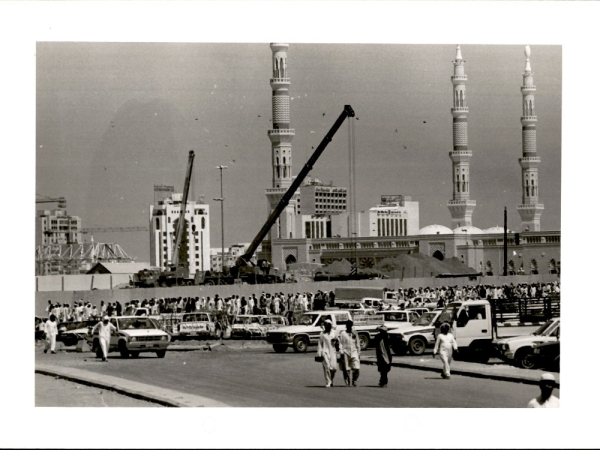
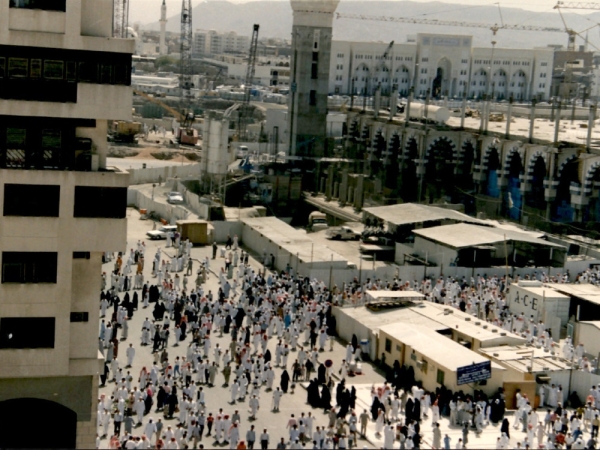
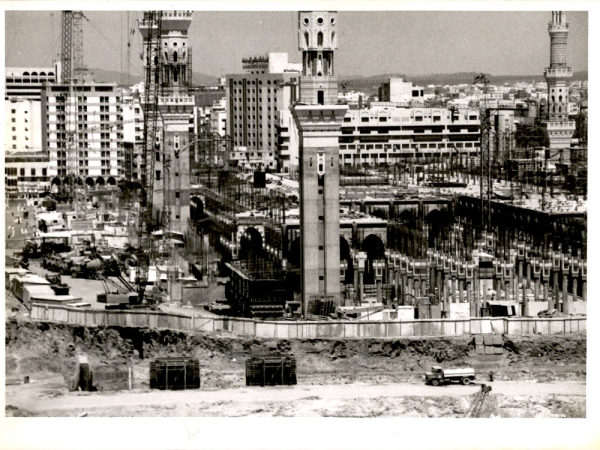
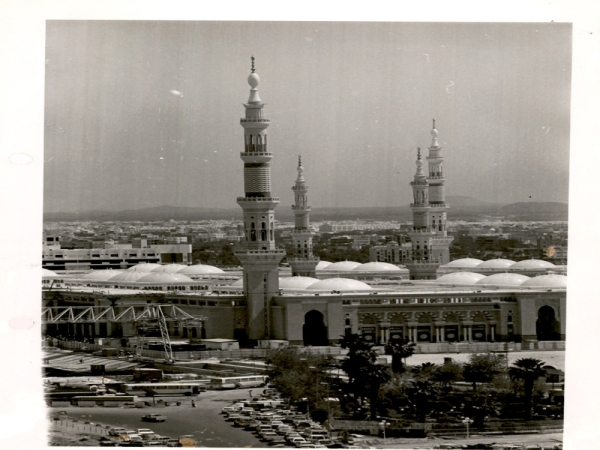
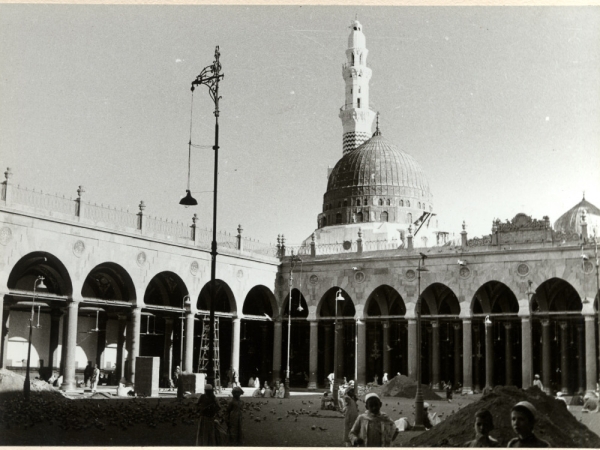
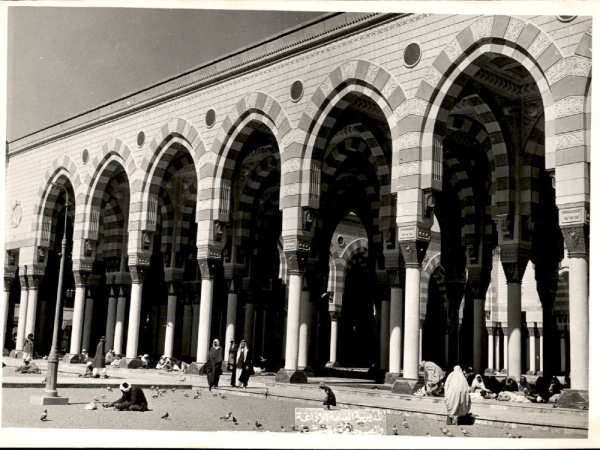
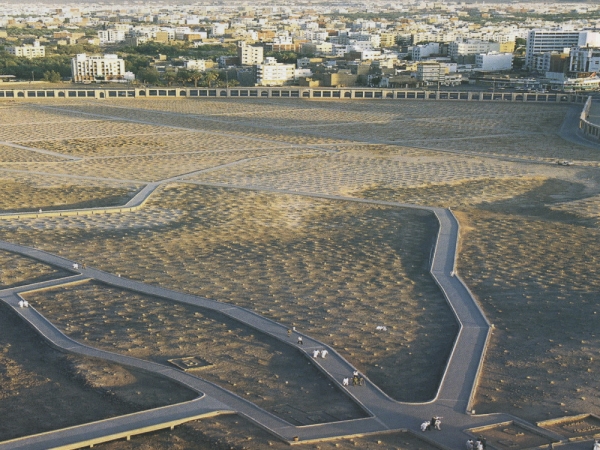
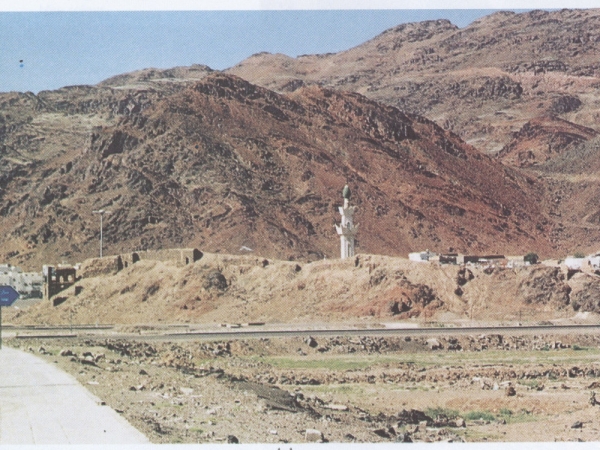
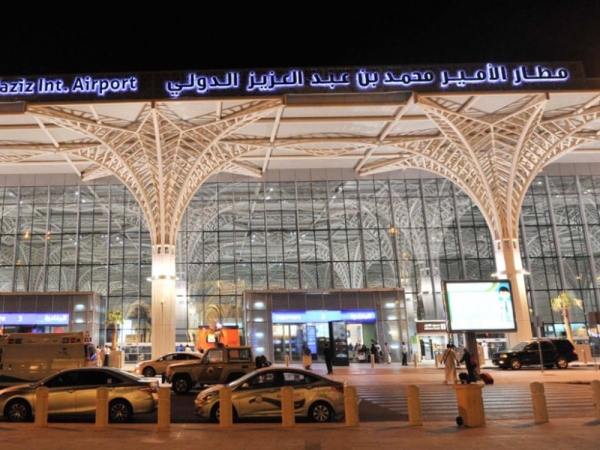
Al-Madinah al-Munawwarah (Al Madīnah al Munawwarah) is the administrative capital of al-Madinah al-Munawwarah Province and the second holiest city in Islam after Makkah al-Mukarramah City. It is also the first capital for Islam. Among its names are Teebah, Sayidat al-Buldan, and Dar al-Salam. Mount Uhud, one of the famous mountains there, is a notable landmark historically and geographically. It is located four km from the Prophet’s Mosque.
Prophet Muhammad, peace be upon him (PBUH), migrated to the city and spent the final ten years of his life there, where he was also laid to rest. Al-Madinah al-Munawwarah is home to the Prophet’s Mosque, the second holiest mosque in Islam, and Quba Mosque, the first mosque built in Islam.
Al-Madinah al-Munawwarah names
Around ninety-five names were given to al-Madinah al-Munawwarah. It was named 'Yathrib' after its first inhabitants. Then, after the migration of the Prophet (PBUH), it was called al-Madinah al-Munawwarah. Other names include al-Mu'mina, al-Mahbouba, al-Moukadasa, al-Barrah, Dar al-Abrar, Ard Allah, Tabah, or Teebah, Sayidat al-Buldan, Dar al-Salam, al-Muharramah, al-Mubarakah, al-Mahroussa, al-Marhouma, al-Jabbara, al-Mukhatara, al-Kassima, al- Fadiha, al-Moufyi, Dhat al-Hirar, Qalb al-Iman, Akalt al-Qura, Qubat al-Islam, al-Ma'souma, al-Iman wa al-Dar, and Haram Rasul Allah (PBUH).
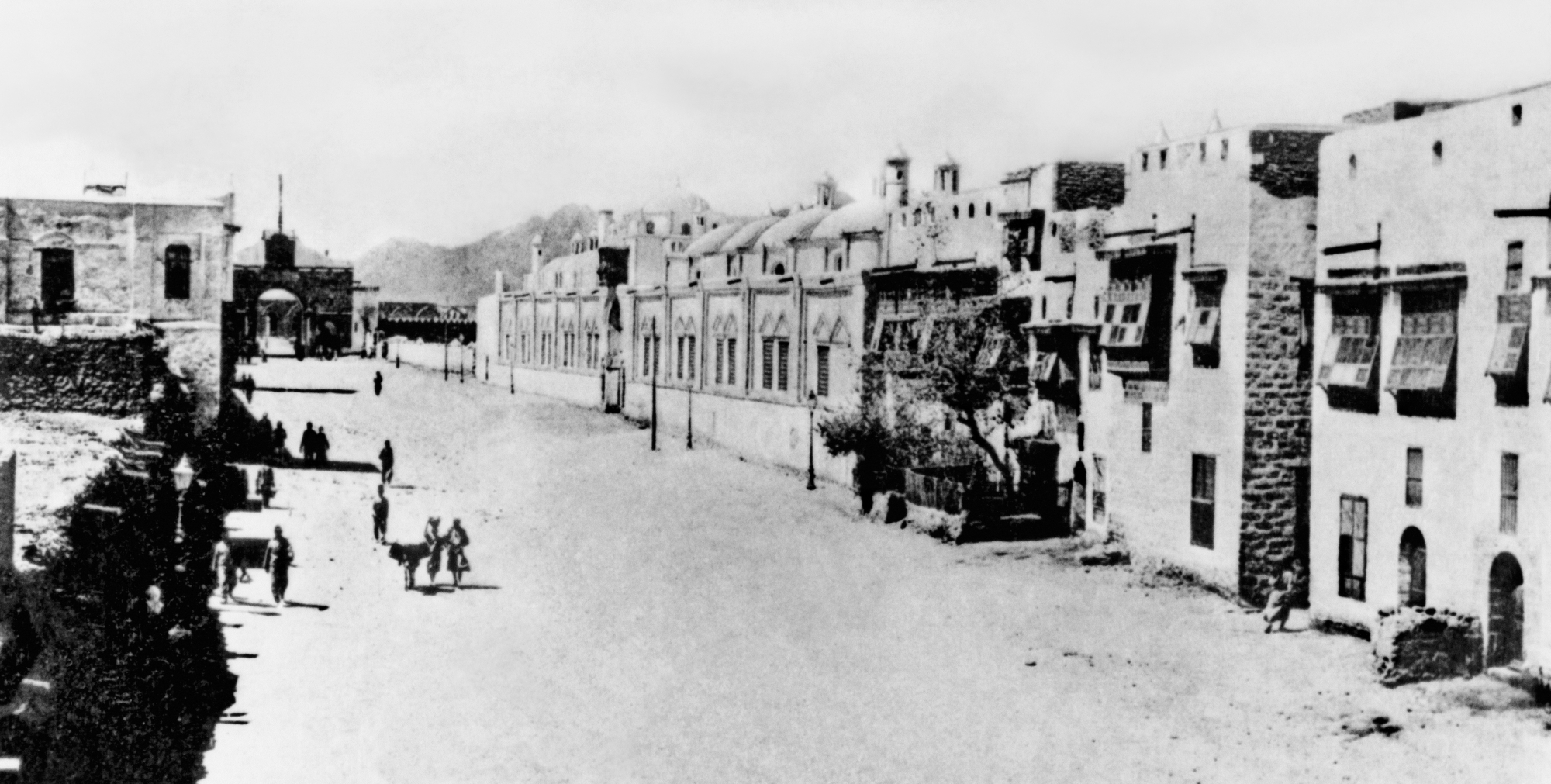
Al-Madinah al-Munawwarah in the past
Historical Existence: The first inhabitation in Al-Madinah Al-Munawwarah after the flood that occurred during the era of Noah (PBUH) was by Yathrib Abu Ubail bin Awad bin Adam bin Sam bin Noah. Consequently, the city was initially named Yathrib after the first person who settled there. It was inhabited by the Amalekites, who spread across the Arabian Peninsula and stayed in the Hijaz, including Makkah and al-Madinah, until Moses (PBUH) sent someone to fight them. After that, none of them remained in that land. Then, it was settled by a group from the Banu Harun who were entrusted with the Torah. They believed in the prophecies in their scriptures about the coming of the Prophet Muhammad (PBUH) and died instructing their descendants to follow him. However, when the prophecy was fulfilled, those who lived to see it rejected him out of anger and envy towards the Ansar who had embraced him first. About twenty Jewish tribes arrived in the city. They perished before Banu Aws and Banu Khazraj migrated to al-Madinah. Only three tribes survived: Banu Anif, Banu Naghssa, and Banu al-Qassis.
Some members of the Banu Aws and Banu Khazraj tribes were part of the city's Ansar, while others are from the lineage of the forty scholars who accompanied Taban Asaad Abu Karb. The latter built and covered the Sacred House. As they passed through al-Madinah, they asked him to stay there because they had read that the city would be the place of migration for a prophet named Muhammad, whom they wanted to meet. Taban agreed with them and honored their request.
During the time of the mission of the Prophet (PBUH), the leader of the people of Madinah was Abd Allah Ibn Ubayy, who governed both Banu Aws and Banu Khazraj, two tribes that had not previously united under a single ruler. The Prophet (PBUH) went to al-Madinah in the year 622, thus marking the beginning of the Hijri history.
Significance of al-Madinah al-Munawwarah
Al-Madinah al-Munawwarah lies 442 km distant from Makkah al-Mukarramah and the Grand Mosque, the Qibla of Muslim prayer globally. For Muslims, it holds significant religious importance. These two cities together form a main pilgrimage destination in the life of every Muslim, drawing approximately 93.3 percent of all pilgrims who journey to Makkah al-Mukarramah annually. Al-Madinah al-Munawwarah played an essential role in the emergence and dissemination of Islam. Muslims migrated there in the first year of Hijrah, thus establishing the Islamic Hijri calendar. Al-Madinah al-Munawwarah is home to the Prophet’s Mosque, the second holiest mosque after the Grand Mosque. It was built by Prophet Muhammad (PBUH) and his Companions, and he resided next to it. It is the last of the prophets’ mosques and includes the Holy Rawdah. It covers an area of about 330 m², extending between the house of the Prophet (PBUH) and his minbar. The Prophet's Mosque has been expanded several times throughout history, with the largest expansions being carried out by the Saudis. It now accommodates approximately one million worshippers.
Jabal Uhud
It stands as a renowned mountain in al-Madinah al-Munawwarah, embodying both historical and geographical significance. Situated four km from the Prophet’s Mosque, it witnessed the pivotal Battle of Uhud at the dawn of Islam, between Muslims and the Quraysh. Its terrain cradled seventy martyrs from the Prophet's companions, notably Hamzah Bin Abdulmuttalib, the uncle of the Prophet Muhammad (PBUH), revered as the Master of Martyrs in Islam.
Jabal Uhud is one of the most renowned Islamic and tourist sites associated with the Prophet's biography and historical events. Visitors flock to it at all times, as it is one of the enduring historical places in al-Madinah al-Munawwarah. The Prophet Muhammad (PBUH) said of it, 'Uhud is a mountain that loves us, and we love it.' This statement has fostered universal affection for it and a desire among Muslims to visit.
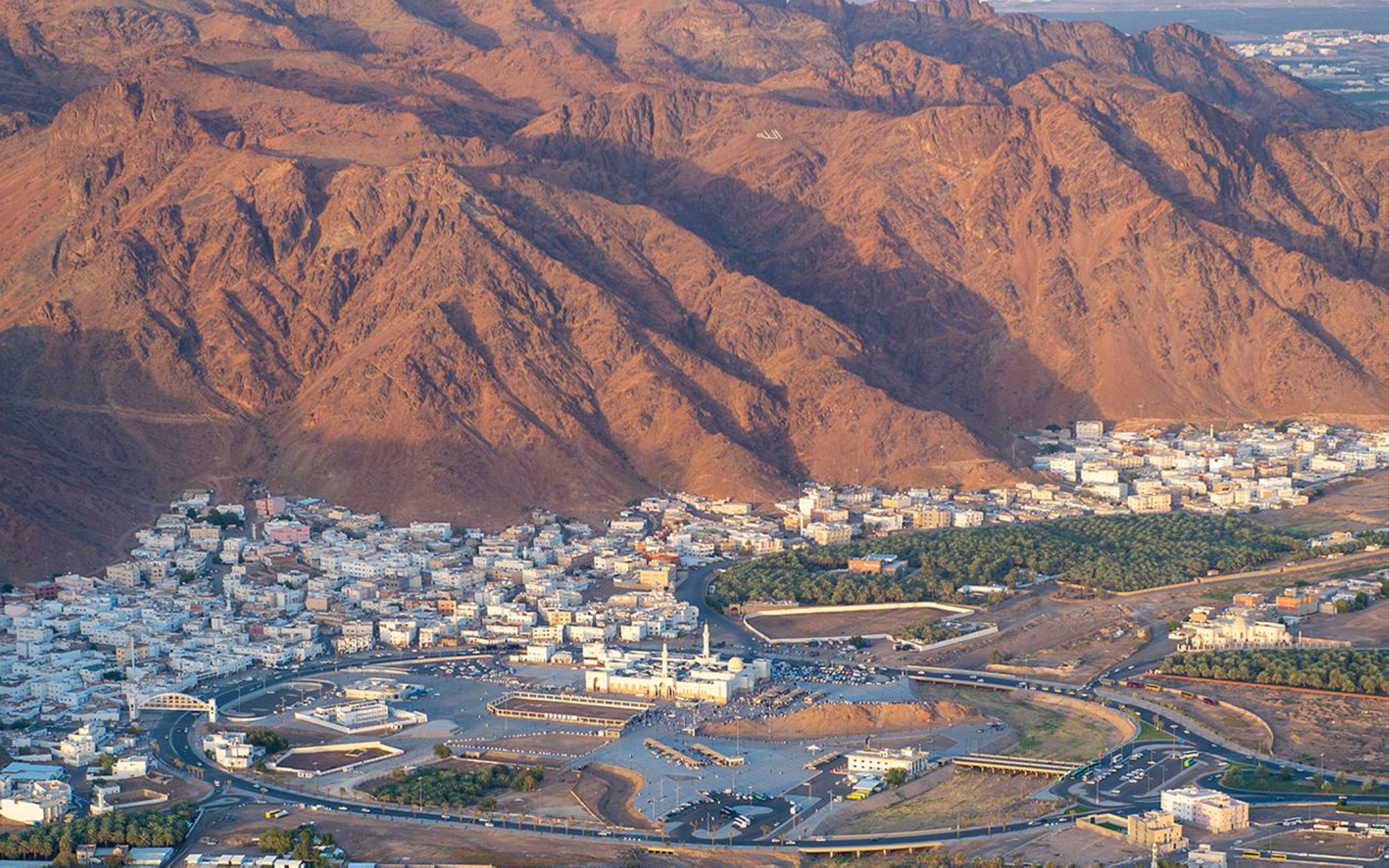
Geography of al-Madinah al-Munawwarah
Geographical location of al-Madinah al-Munawwarah
Al-Madinah al-Munawwarah is the capital of al-Madinah al-Munawwarah Province, located in the western part of the Kingdom. It sits on an axis about 250 km east of the Red Sea, at an altitude of 620 m above sea level, covering an area of approximately seven hundred km.
Climate of al-Madinah al-Munawwarah
The city experiences a hot continental climate, with summer temperatures ranging between thirty-six and forty-six °C, averaging around thirty °C, and winter temperatures between fifteen and twenty °C, with an average of fifteen °C. Rainfall is infrequent, occurring primarily between November and January, with an average precipitation of ninety-four mm.
Population of al-Madinah al-Munawwarah
According to the 2022 Saudi census, al-Madinah al-Munawwarah (the headquarters of the emirate) is home to 1,477,047 inhabitants. It spans an area of approximately seven hundred km and ranks fourth among six cities in the Kingdom with a population exceeding one million people. Its residents constitute around 597,866 individuals, equivalent to 40.47 percent of the total population. The city experiences high levels of population density, with an average of 2,110 people per kmof its land.
Landmarks of al-Madinah al-Munawwarah
Al-Madinah al-Munawwarah is home to various landmarks, including mountains, valleys, springs, wells, and natural harrat (lava fields). It is surrounded by mountains from almost all sides. On the other hand, harrat border the city from east to west. The city also contains many wells and valleys, some of which dried up, while others persist until this day. The most prominent of these landmarks are:
Valleys
They include, for instance, Wadi al-'Aqiq. It derives its name from the reddish hue of its surroundings and from the Arabic term 'Aqq', meaning to cut through, due to its torrential waters carving through the Harrat. Originating from the tribal side of the Makkah mountains, it gains volume until it reaches al-Madinah. Along its course, it bifurcates into two valleys: the smaller one hosting the Rumah Well, and the other housing the Urwa Well.
Wadi Buthhan: It flows from the upper Harrat, and it is the only valley that passes through the city from the north to the south. It has many Sha'ib (distributaries) outside the city.
Wadi ar-Ranuna: It originates from the direction of Jabal Ayr, east of al-Harrah. It converges with Wadi Buthhan and is referred to as 'the torrent of Sayyidna Hamza'.
Wadi Mahzour: It flows from Harrat Shawran. The valley used to pass by the Prophet’s Mosque and al-Baqi before diverging to other locations.
Spring and wells
`Ayn al-Azraq well: It is known today as 'Ayn al-Zarqa (which translates to blue eye). The name goes back to Caliph Muawiyah who ordered the city's governor, Marwan Ibn al-Hakam, to build the well. The governor had blue eyes, thus the name of the well.
Ain al-Nabi (The Prophet's well (PBUH)): It was known as al-Uyaynah. Then, it was called after the Prophet because this is where he performed ablution during the Battle of the Trench.
Bir Aris: It was also called the Well of Aqaba, and is known today as Bir al-Khatam (The Ring Well). Its name was derived from when the Prophet's ring (PBUH) fell in the well from the hands of Uthman Ibn Affan (may Allah be pleased with him).
Well of Urwa: Located on the bed of Wadi Al-Aqiq, this well was established by the companion Urwa Ibn al-Zubayr. The well contains mineral water, renowned as the finest water in al-Madinah al-Munawwarah.
Mountains
Mountains surround al-Madinah al-Munawwarah on almost all sides. Mountains within the city include al-Qilada, Sawi, and al-Kueyra on the Qibla's side. It is surrounded by Jabal Biram to the west and Jabal Assib to the east. Additionally, there are Jibal Kachf in the Quba area, Jabal Makran nearby, and Jibal Qudsi range located west of Wadi Saf, near Jabal Ara.
The mountains bordering al-Haram include: Mount Uhud, Jabal Ayr, Jabal Makhid, Jabal Ghrab, and Jabal Bani Ubaidah to the west of al-Fath Mosques, near Sela Mountain. Other mountains include Jabal Thubab and Jabal Maytan. Some mountains are located far from the city, such as Jabal 'Azam, Jabal 'Iyer, and Jabal Warqan.
Al-Harrat
Harrat al-Wabra and Harrat Waqim, both located west of the city, in addition to Harrat Shawran, Harrat Quba', Harrat Fidek, Harrat Leyla, and Harrat Ma'sem.
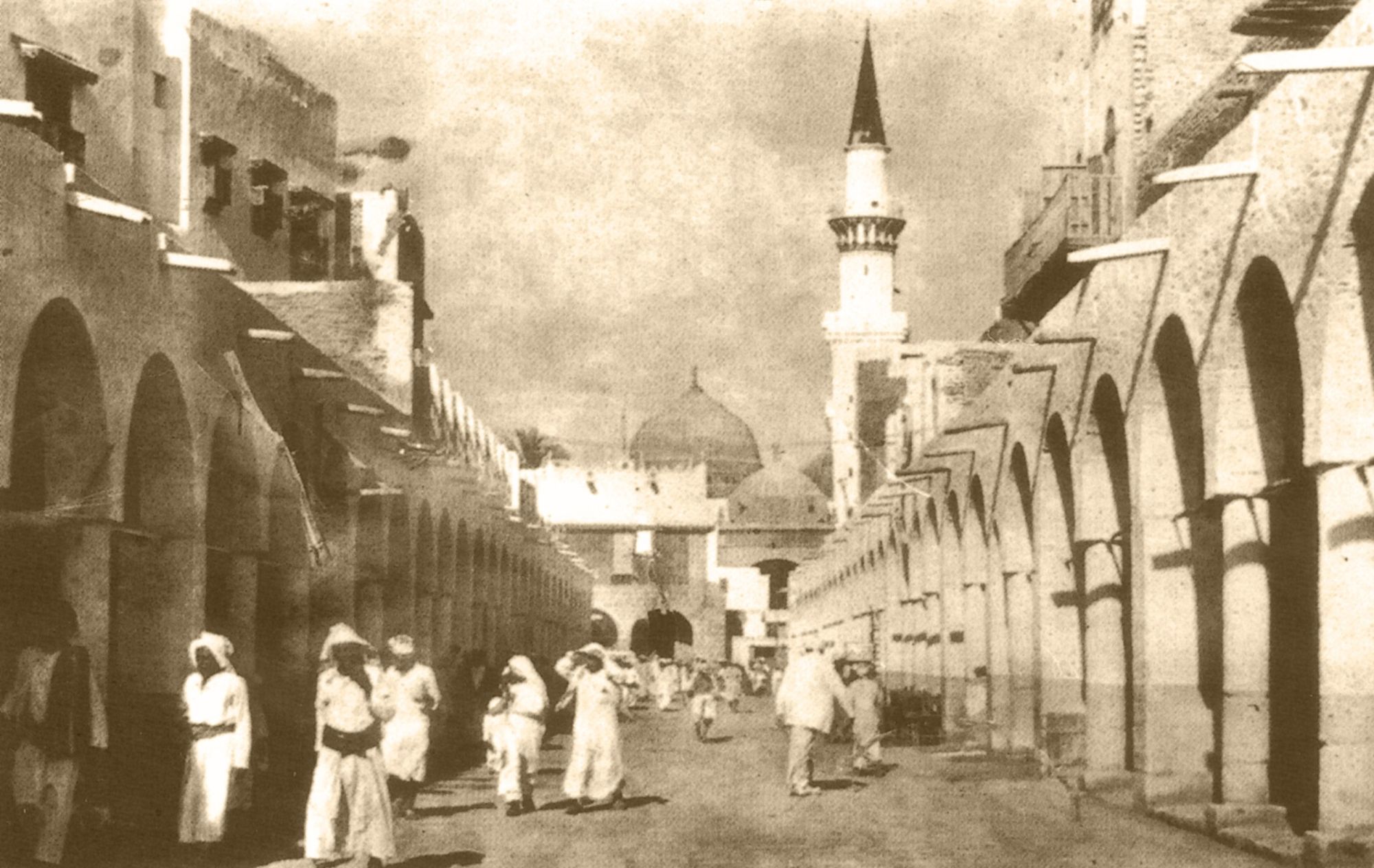
Historical monuments and landmarks in al-Madinah al-Munawwarah
Institutes and palaces
Al-Madinah al-Munawwarah was once brimming with the residences of the most prominent men and leaders of the Islamic State. Palaces were erected, farms and orchards flourished in its vicinity, and wells were dug. Nevertheless, with the passage of time, the majority of these structures vanished, leaving only those whose existence has been substantiated in historical records, including:
The Palace of Abi Hashim Bin al-Mughira Bin al-Aas, Palace of Anbasa Bin Sa'id Bin al-'As, Palace of Abdulaziz Bin Abdullah al-Othmani, Palace of Sa'id Bin al-'As Bin Umayyah, Palace of Ismail Bin al-Walid Bin Hisham, Qasr Khal, Ibn Mah Palace, Palace of Bani Jadila, Palace of Ibn Arak, Ibn Youssef Palace, and other forts detailed in books.
Khandaq (trench)
The trench is situated north of al-Madinah al-Munawwarah, extending from the eastern Harrat's edge to the outskirts of the western Harrat. It was dug by the Prophet Muhammad (peace be upon him) and his companions in six days, prior to the arrival of the Jewish Banu Nadir along with Quraysh. This attack became known as the Battle of the Trench, alternatively referred to as the Battle of the Confederates. The trench was bordered by the flowing waters of Wadi Buthhan and Tamma, leaving only its location to mark its existence.
The wall of al-Madinah
The city had an impenetrable wall surrounding it from all sides. It was built by Mohammed Bin Ishaq al-Jaadi in 851 and had four main gates. The majority of the wall was gradually demolished over time. Despite being reconstructed with its doors and height increased nearly tenfold, it was ultimately completely removed in accordance with the Kingdom's regulations to open up the streets, driven by urban expansion from all directions.
Mosques of al-Madinah al-Munawwarah
The Prophet's Mosque
It was built in the location chosen by the camel of the Prophet (PBUH) when he arrived at al-Madinah in a place called al-Mirbad. He purchased the land and built the mosque there, thus becoming the place for the Prophet's Mosque. The foundations of the mosque were laid with stones, its columns were made from palm trunks, and its roof was constructed using palm leaves, which were subsequently plastered with clay. The Qibla was initially directed towards Jerusalem, specifically al-Aqsa Mosque. The mosque had three gates: Bab Atikah, which was later called Bab al-Rahmah, in addition to Bab Abu Bakr to the west, and Bab Al Uthman to the east, through which the Prophet (PBUH) used to enter the mosque. When the Qibla was redirected towards the Grand Mosque, the original Qibla gate was closed, and the mosque underwent reconstruction following the conquest of Khaybar with Zayd ibn Haritha. Subsequently, a new gate was opened in alignment with the former closed gate. The expansion, restoration, and construction of additional minarets continued until the mosque was completed during the reign of King al-Zahir Baybars al-Bunduqdari. The architecture and renovation continued until the Kingdom rebuilt it between 1951 and 1956, thus increasing its area and adding more gates and minarets.
Quba Mosque
It is the first mosque in Islamic history. Its first foundations were laid by the Prophet Mohammad (PBUH) in 622, the first year of the Hijri calendar, which was adopted after the Prophet's migration from Makkah to Yathrib, now known as al-Madinah al-Munawwarah. Consequently, the mosque is over fourteen centuries old The total area of the mosque is 13,500 m. The Prophet (PBUH) said the following about the virtue of prayer, "Whoever purifies himself in his house, then comes to the mosque of Quba and prays in it, he will have a reward like the Umrah pilgrimage.”
Al-Jum'ah Mosque
In that location, the Prophet (PBUH) stopped in the region of Wadi ar-Ranuna and performed the Jumu'ah (Friday) prayer, which was the first time he had performed this prayer within the city. Consequently, the mosque was named after that.
Al-Fath Mosque
Also called the Mosque of the Confederates or the Supreme Mosque. This is where the Prophet (PBUH) supplicated against the Confederates until Allah failed them and they were defeated. It was built during the reign of Umar Ibn Abd al-Aziz.
Other mosques in al-Madinah al-Munawwarah include: Mosque of As-Saqiya, al-Qiblatayn Mosque, al-Zawiya Mosque, Mosque of al-Fadeekh, al-Ijabah Mosque, al-Eid Mosque, Mosque of Bani Zafar, Bani Qurayza Mosque, Mosque of Umm Ibrahim, Mosque of Bilal, Mosque of Umar, Juhayna Mosque, and the mosque at al-Mutrafi’s houses.
Historical events and facts in al-Madinah al-Munawwarah
Battle of Badr
It took place in March 624. The Quraysh army numbered more than a thousand men, while the Muslim army comprised approximately three hundred men. The Quraysh were defeated after seventy of their men were killed and seventy others were captured, while fourteen men from the Muslim army were martyred.
Battle of Uhud
It took place on April 2, 625. The Quraysh arrived with three thousand men, while the Muslim army did not exceed one thousand men, with whom around three hundred hypocrites withdrew with Abdullah Ibn Ubayy. During this battle, the Prophet Muhammad (PBUH) was injured: his forehead was cut, his right lateral incisor were broken, and his cheek and lower lip were injured. This occurred when the Muslims were exposed after fifty men disobeyed the orders of the Prophet (PBUH) not to leave their positions on the mountain to protect the Muslims. Their role was to shoot arrows at the horses because they were not capable of confronting the cavalry. However, as soon as they saw the victory of the Muslims, they left their places to collect the spoils. The polytheist army then surrounded them, resulting in seventy Muslim men being martyred.
Battle of the Trench
It took place in February 627, when the Quraysh gathered ten thousand fighters to combat the Prophet Muhammad (PBUH), who had three thousand Muslim men on his side. He (PBUH) ordered the digging of a large trench around the city, effectively besieging the Quraysh army for several days. Those among their ranks who attempted to cross the trench with their horses either perished or fled from the ensuing pursuit. Additionally, Allah sent a wind that disrupted the polytheists' encampments and scattered their belongings. Amidst internal discord, they opted to retreat.
Battle of al-Harra
In 683, when Yazid Bin Muawiyah learned that the people of al-Madinah al-Munawwarah had deposed him due to his excessive immorality, he dispatched a large army led by Muslim Ibn ʿUqba al-Murri to compel its inhabitants to pledge allegiance to him. The Battle of al-Hurra occurred on al-Madinah's outskirts, resulting in the deaths of more than 12,000 individuals, including around two thousand Ansar, Muhajireen, and memorizers of the Quran. The city was under the control of this army for three days, while the remaining residents sought refuge in the mountains. However, Yazid's rule lasted no more than three and a half years.
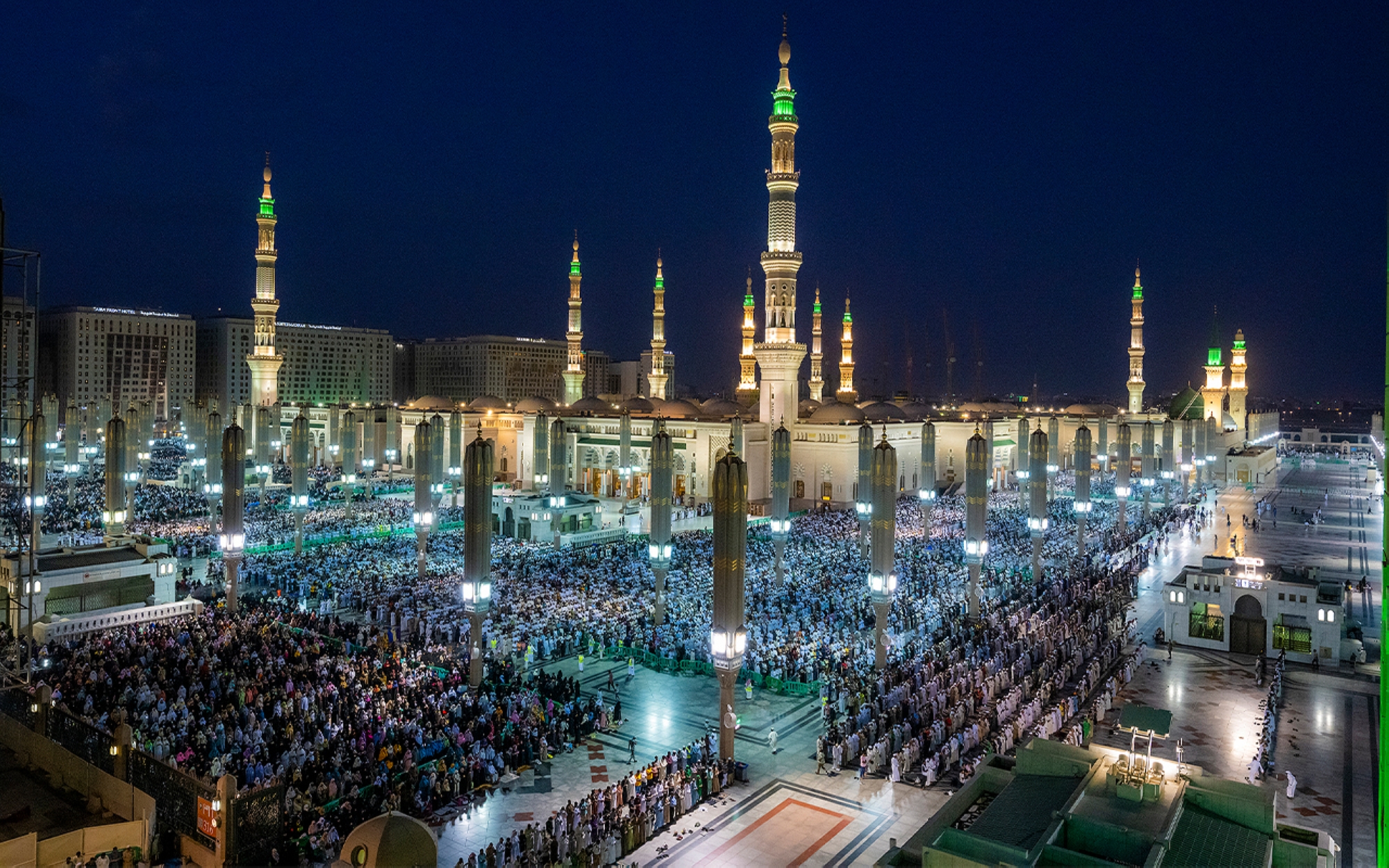
Al-Madinah al-Munawwarah in the Saudi Era
Al-Madinah al-Munawwarah is the administrative capital of al-Madinah al-Munawwarah Province, located in the west of the Kingdom. It is bordered to the north by the governorates of Khaybar, al-Ula, and al-'Is, to the west by the governorates of Yanbu and Badr, to the south by Wadi al-Fara' Governorate, and to the east by al-Hanakiyyah Governorate. It is administratively affiliated with the Emirate of al-Madinah al-Munawwarah Province, along with eight other governorates. It is one of the Saudi provinces being developed by a higher development authority chaired by the governor of the province.
Education in al-Madinah al-Munawwarah
Al-Madinah al-Munawwarah has two public universities: Taibah University and the Islamic University of Madinah, in addition to a number of public colleges and universities: University of Prince Mugrin Bin Abdulaziz University, Arab Open University, al-Rayan Colleges, as well as colleges and institutes of the Royal Commission for Jubail and Yanbu, and sixteen technical and vocational training units. There are also six scientific institutes and special education schools, including seventy-nine schools for boys and fifty-six schools for girls. It encompasses 1,851 public education schools, 759 of which are dedicated to boys, accommodating approximately 150,019 students. On the other hand, the total number of girls' schools amounts to 1,092, with about 205,669 female students, according to the General Directorate of Education in al-Madinah al-Munawwarah Province until October 2, 2022.
Economic activity in al-Madinah al-Munawwarah
In addition to its religious and historical significance, al-Madinah al-Munawwarah boasts economic strengths, encompassing 3.09 percent of the total labor force in the Kingdom's factories. The industrial sector dominates economic activity, constituting 33 percent, with 45,313 employees working in this field, followed by the government services sector at 18 percent and the trade sector at 12 percent, employing 59,824 employees. Moreover, the cultivated area in al-Madinah al-Munawwarah covers 1,444.29 ha, representing 3.5 percent of the total cultivated area in the Kingdom. Al-Madinah al-Munawwarah is a tourist destination annually visited by about seven million people. The average duration of stay among tourists ranges between 4.5 and 13 nights, while the average spending on a trip varies between SAR998 and SAR3,730.
Services in al-Madinah al-Munawwarah
Prince Mohammed Bin Abdulaziz International Airport is situated in al-Madinah al-Munawwarah, twenty-one km from the Prophet's Mosque, boasting a capacity of approximately fifteen million travelers annually. The Haramain High-Speed Railway, connecting Makkah al-Mukarramah, Jeddah, and al-Madinah al-Munawwarah, has reduced travel time between the two holy cities to two and a half hours. Consequently, the yearly influx of pilgrims journeying from Makkah al-Mukarramah to al-Madinah al-Munawwarah has seen an increase.
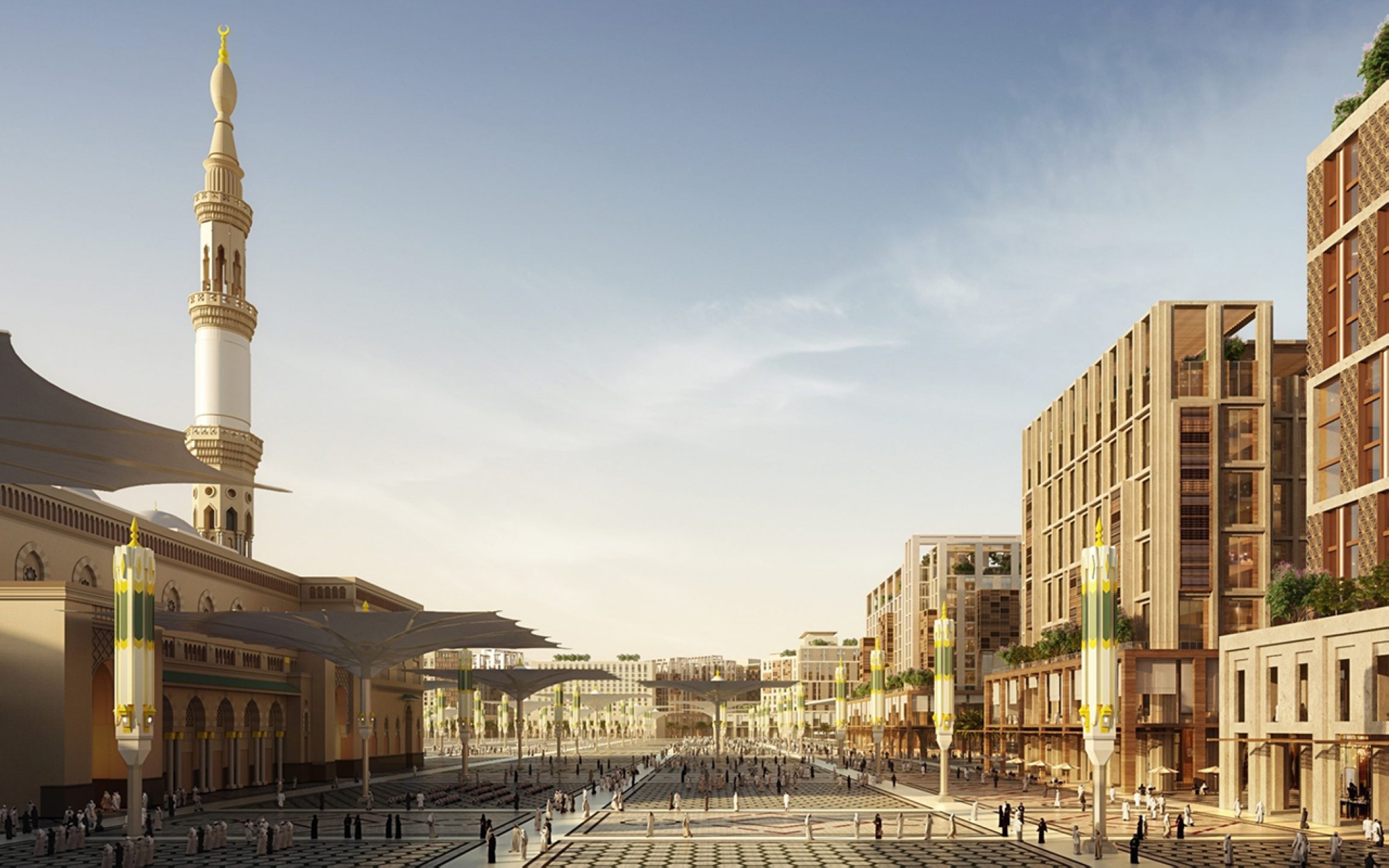
The Kingdom's efforts in al-Madinah al-Munawwarah
Rua al-Madinah Project
The project is situated to the east of the Prophet’s Mosque, signifying a shift in the economic landscape of al-Madinah al-Munawwarah. It harbors the potential to spawn numerous mega projects and opportunities. Developed and implemented by Rua al-Madinah Holding, a wholly-owned entity of the Public Investment Fund, the project is geared towards fostering growth in promising sectors, aligning with Saudi Vision 2030, and enhancing its capacity to accommodate thirty million Umrah performers by 2030. Furthermore, the project will adhere to the highest international standards, underscoring the Kingdom’s commitment to elevating the quality of services extended to pilgrims in al-Madinah al-Munawwarah.
The project is being constructed on a total area estimated at 1.5 million m. Its aim is to establish 47,000 hospitality units by 2030, in addition to open squares and green areas to facilitate visitors' access to the Prophet's Mosque. It also includes nine visitor bus stops, a metro train station, a pathway for self-driving vehicles, and underground parking. These are designed to facilitate the movement of visitors to the Prophet's Mosque, thereby supporting residential and commercial activity and providing numerous job opportunities. The project aims to improve the services provided to the pilgrims in al-Madinah al-Munawwarah, as a modern Islamic and cultural destination.
Al-Madinah al-Munawwarah Region Development Authority
On December 28, 2009, a royal order was issued to establish al-Madinah al-Munawwarah Development Authority. Subsequently, the Council of Ministers issued a resolution to amend its name to al-Madinah al-Munawwarah Region Development Authority. This authority is overseen by the governor of al-Madinah al-Munawwarah Province, and its members include the Minister of Finance and the Minister of Hajj and Umrah, alongside the province secretary. Allocated with its own budget, the authority is tasked with responsibilities outlined in the royal order, which involves transferring duties from the executive committee for the development of the central region to al-Madinah al-Munawwarah Region Development Authority.
MADINAH Investments
MADINAH Investments is one of the initiatives launched by al-Madinah al-Munawwarah Chamber. It aims to stimulate investment in al-Madinah al-Munawwarah Province by identifying and presenting investment opportunities from the public and private sectors. In collaboration with al-Madinah al-Munawwarah Region Development Authority's Urban Observatory and the Emirate of al-Madinah al-Munawwarah Province's Economic Development Center, it seeks to activate investment in al-Madinah al-Munawwarah Province by marketing investment opportunities in various economic sectors, strengthening partnerships between opportunity providers and investors, and providing all potential facilities for investment in the province.
Projects for the future of al-Madinah al-Munawwarah
Madinah Buses project
It seeks to develop transportation services for citizens and visitors of al-Madinah al-Munawwarah to and from several main points, most notably the Prophet's Mosque, Quba Mosque, Prince Mohammed Bin Abdulaziz Airport, Haramain Train Station, and a number of vital centers. The fleet consists of twenty-seven buses and includes 106 main and subsidiary stops across four routes. It contributes to enhancing traffic flow on the main streets, reducing environmental pollution resulting from vehicle exhaust, and advancing the quality of transportation projects, aligning with one of the goals of Saudi Vision 2030.
Restoration of the Qibli Wall at the Prophet's Mosque
This project aims to preserve and showcase the aesthetic and historical value of the wall, while respecting its original materials, conserving the heritage and history of the Second Two Holy Mosques, and attending to all the intricacies of the archaeological cladding of the wall that stretches 72.56 linear m, with a height of 2.55 m. In collaboration with the Agency of the General Presidency for the Affairs of the Prophet's Mosque, which is affiliated with the General Authority for the Affairs of the Grand Mosque and the Prophet's Mosque in al-Madinah al-Munawwarah, al-Madinah al-Munawwarah Region Development Authority has begun restoring the Qiblah Wall at the Prophet's Mosque, in accordance with international conventions for the restoration and preservation of historical facilities.
Imam Muslim Road intersection project
This project is part of the constant endeavors of al-Madinah al-Munawwarah Region Development Authority to provide urgent solutions to the road and transportation network in al-Madinah al-Munawwarah. The project aims to connect the western neighborhoods of the city with both Amir al-Mo'menen Umar Bin al-Khattab and al-Hijrah roads. It is a vital entrance to and exit from Aziziyah neighborhood and reduces congestion on Prince Nayef and al-Salam streets.
The rehabilitation project of Wadi al-'Aqiq (the Blessed Valley)
The project aims to transform the valley into a natural park for the people and visitors of al-Madinah al-Munawwarah. It involves the establishment of walkways, bicycle paths, green spaces, areas for family gatherings, public services, and investment sites. Moreover, the project seeks to enhance historical areas on the banks of the valley and highlight the significance of Wadi al-'Aqiq as an environmental and tourism resource, with tangible religious, urban, social, and historical dimensions. Wadi al-'Aqiq is known as a natural drainage path for flood and rainwater over an area estimated at over five thousand km.
Farms covered large areas of the valley's banks around palaces. Furthermore, ancient writings and antiquities that were discovered in the valley also confirm the presence of a large human settlement on its banks, as remains of ancient palaces dating back to the Abbasid and Umayyad eras were uncovered in the area.
Al-Madinah al-Munawwarah entrances and gates project
The project aims to construct modern gates that will function as hubs for offering services to visitors and pilgrims upon their arrival and departure. These gates will embody the status and sanctity of al-Madinah al-Munawwarah, with its architectural design drawing inspiration from its history. This will consequently convert al-Madinah al-Munawwarah’s entrances into cultural landmarks possessing a distinctive identity. Each entrance to the gate building includes a mosque with its facilities, shops, restaurants, an information center, gardens and squares, private and bus parking lots, and buildings for the relevant government entities that operate the gate and provide the necessary services to those passing through.
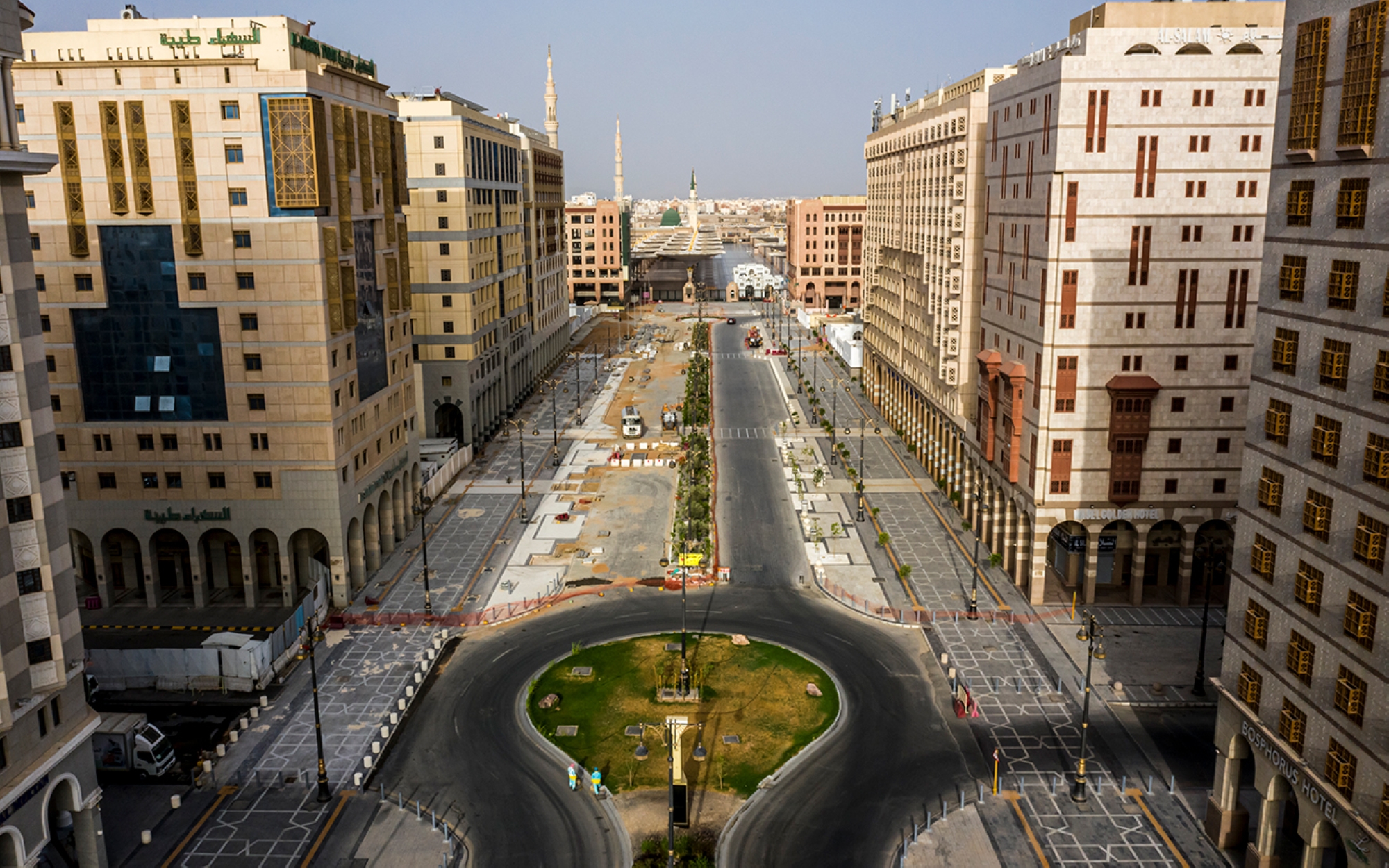
Al-Salam Street Development Project
The project aims to control pedestrian and worshipper movement on the side sidewalks, restrict movement on the central island to designated pedestrian crossings only, and regulate the infrastructure along al-Salam Street. It is part of al-Madinah al-Munawwarah Region Development Authority's endeavor to enhance the streets surrounding the Prophet’s Mosque, elevate the quality of life in the region, enhance the visual appeal, and facilitate the movement and arrival of pilgrims and Umrah visitors.
Historical mosque restoration project
Historical mosques include Abu Bakr al-Siddiq Mosque, Umar Bin al-Khattab Mosque, and al-Jum'ah Mosque. The mosque restoration project aims to preserve, care for, and restore historical mosques in al-Madinah al-Munawwarah, in addition to highlighting their religious, cultural, and urban value. Furthermore, the project enriches the visitor's experience culturally and emotionally by caring for Islamic historical sites, which are among some of the most important tourist attractions in al-Madinah al-Munawwarah.
The development of al-Qiblatayn Mosque
The project aims to increase the capacity of worshippers and visitors to al-Qiblatayn Mosque and facilitate the passage of visitors to and from the mosque, ensuring their safety. Additionally, it involves the establishment of gardens, informative and interactive panels narrating the mosque's history, as well as the construction of a cultural center building, an exhibition facility, and a designated shop area, transforming the mosque into a cultural hub.
Madinah Humanization Program
The idea of humanization entails discovering and emphasizing the human aspect within urban development and planning for all segments of society. This necessitates enhancing visual identity, supporting and fostering cultural, promotional, and artistic programs, and arranging urban squares, open spaces, and green areas.
The Historic Path
The project aims to redevelop and reopen historical and Islamic sites. Additionally, it seeks to establish public spaces and paths, along with consistent and progressive activities, within an integrated system to enrich the experience of visitors and guests.
Quba Mosque development project
The project aims to expand and develop the Quba Mosque to increase its capacity, bridging the gap between the current situation and the growing demand, aligning with the objectives of Saudi Vision 2030. The development area is estimated to be approximately fifty thousand m to accommodate 66,000 worshippers. The project was focused on linking the current Quba Mosque with shaded courtyards on four sides, functionally, spatially, and visually connected to independent prayer halls that are not structurally attached to the current mosque building, in addition to providing all necessary services associated with the mosque. Moreover, the efficiency of the existing mosque building will be enhanced with an accompanying service system. Additionally, improvements will be made to the surrounding road network and infrastructure to increase passage efficiency and facilitate access to the mosque. The project will also seek to implement radical solutions to overcrowding, enhance the security and safety of worshippers, and develop and revive a small number of prophetic sites and monuments within the mosque and its courtyards. Finally, the project will develop and revive the surrounding historical sites to include fifty-seven sites, including several wells, farms, and orchards.
Related quizzes
Related articles

